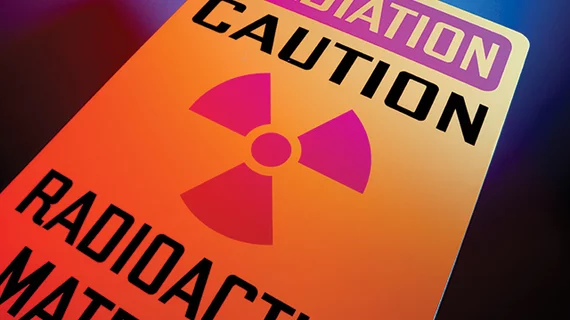When PPE is not enough: Improved shielding during EVAR linked to ‘dramatic reduction’ in radiation exposure
Improved shielding can lead help limit radiation exposure among endovascular aortic repair (EVAR) operators, according to a new analysis published in the European Journal of Vascular & Endovascular Surgery.[1]
The study’s authors noted that wearing only personal protective equipment (PPE) during fenestrated or branched endovascular aortic repair (F/B-EVAR) procedures does not protect surgeons well enough, leaving their head, legs and arms completely uncovered.
“Improving ancillary shielding barriers (ASB) is paramount,” wrote first author Isabelle Fitton, PhD, a specialist with the department of radiology at the University of Paris, and colleagues. “However, the reality is that surgeons in several centers are not well protected against radiation.”
Wanting to learn more about radiation exposure during F/B-EVAR procedures — and what can be done to limit exposure going forward — Fitton et al. focused on data from 15 F/B-EVAR procedures performed at a single facility. All procedures occurred from June 2019 to June 2021 in a hybrid operating room, with operators using both fluoroscopy and digital subtraction angiography.
Three operators performed the procedures. PPE used during the procedures included a radiation protective suit, apron, thyroid collar and lead glasses, and each operator wore 11 dosimeters to monitor cumulative equivalent dose.
The operating room’s initial ASB options were one ceiling-mounted protective screen (CMPS) and table-mounted leaded curtains (TMLC) with an upper extension. The study’s authors then supplemented this with two mobile X-ray protections designed to have a “close body fit,” another CMPS and another set of TMLC.
Overall, dose area product (DAP) and fluoroscopy time were not significantly different before and after the additional shielding options were added. The cumulative equivalent dose, however, was significantly lower with the added shielding options in place. While no radiation dose was detected in the upper chest of the operators before or after the additional shielding, researchers did note that the overall median dose was reduced by more than 97% thanks to the extra shielding.
“The awareness and focus on radiation safety in vascular surgery have gained a lot of attention, but in reality, efforts to improve the protection of endovascular operators are still pending,” the authors wrote. “This study highlights the cumulative equivalent dose during F/B-EVAR, especially at the level of the body parts that are not covered by the PPE with standard ASB. We observed that the radiation exposure was high while all national shielding requirements were complied. The improvement of ASB allowed a dramatic reduction of cumulative equivalent dose for both first and second operators, especially at the legs level without compromising C-arm angulation or operator’s ergonomy.”
The group concluded by calling for improved ASB and a more widespread use of low-dose protocols during F/B-EVAR procedures.
Related Vascular and Endovascular Content:
SCAI 2022 late-breaking clinical research presentations announced
Carotid endarterectomy does not reduce long-term dementia risk
How to improve shared decision-making among vascular surgeons and their patients
Reference:

